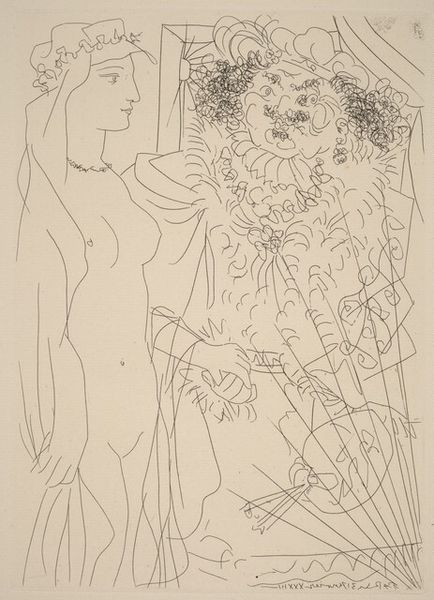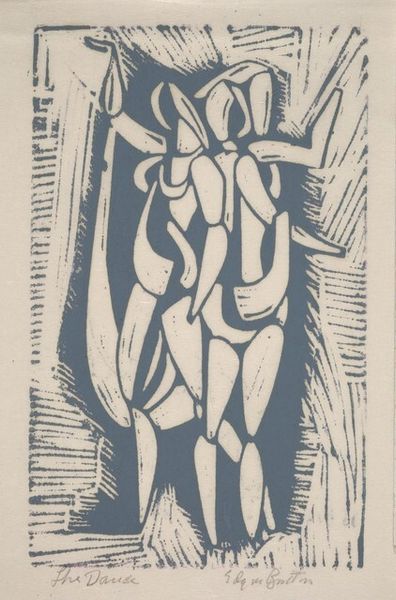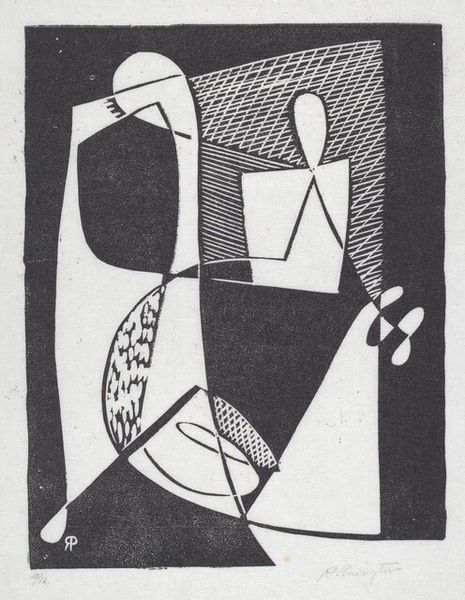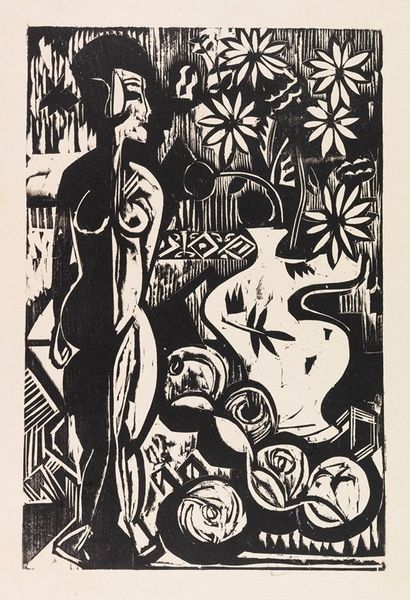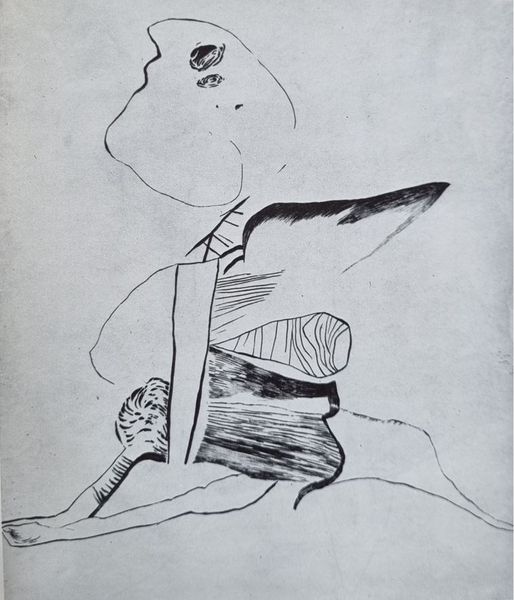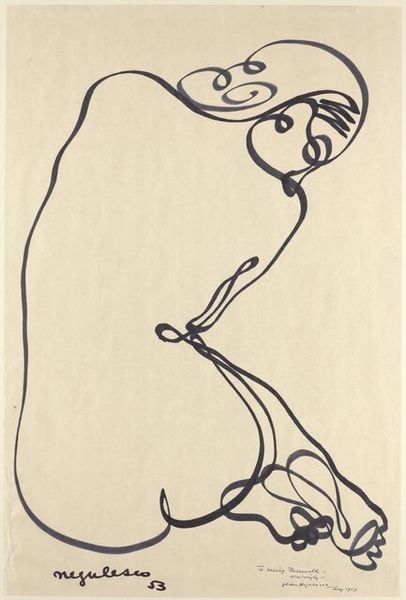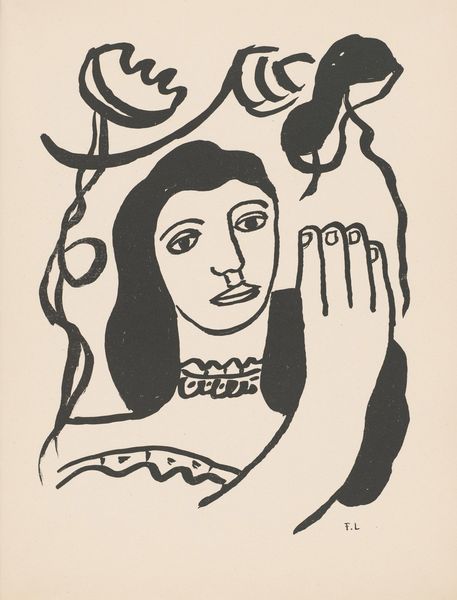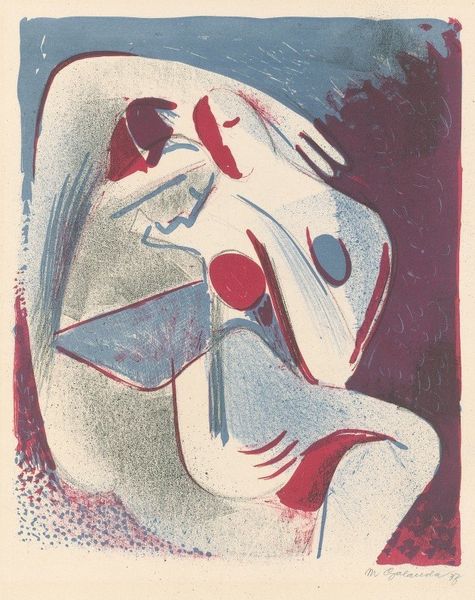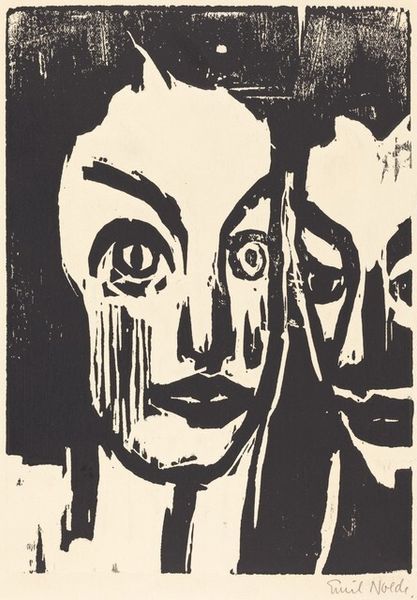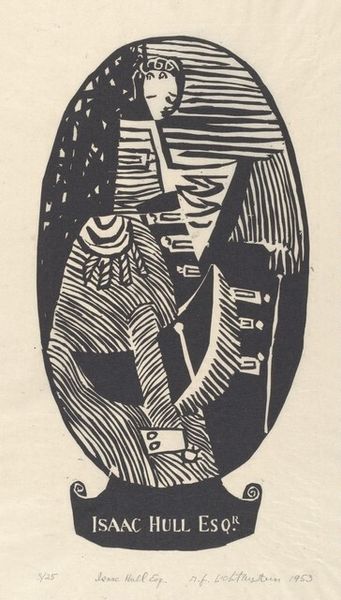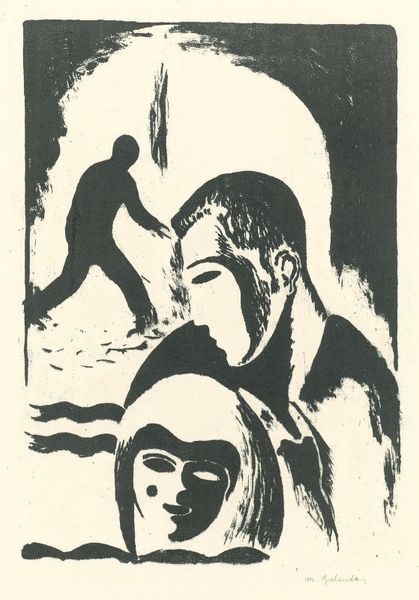
drawing, graphite
#
portrait
#
drawing
#
cubism
#
figuration
#
graphite
#
modernism
Copyright: Public Domain: Artvee
Editor: This graphite drawing, "Woman with a bouquet in a vase," was created by Mikuláš Galanda in 1938. There's a striking simplicity to it; it almost feels like a modern icon. What do you make of it? Curator: It whispers to me of folk art, filtered through the lens of Parisian modernism. Galanda was so captivated by Cubism, wasn't he? But unlike Picasso's fractured planes, Galanda softened the edges, using continuous lines that hint at the female form beneath the drapery. Tell me, what do those simplified flowers evoke for you? Editor: They seem almost secondary, like an afterthought to the more imposing figure. There is definitely an iconic quality about the entire composition! Curator: Exactly! And those hands cradling the vase... there’s a gentle tenderness there, despite the overall angularity. He creates such emotion through simple choices. It almost becomes a portrait of the spirit, more so than the physical being, don't you agree? It makes me wonder what emotions Galanda might have felt toward this woman and the fragile flowers she holds. Editor: I do agree, it transcends pure representation. Thinking about the spirit more than likeness adds so much. Is there anything else like this work, made during this time? Curator: I find connections to Modigliani's portraits. Both artists elongate and simplify the figures to create that emotional essence that they explore in their works. But here, with Galanda's roots in Slovakian culture, there's also this profound stillness and deep connection to the earth. Almost monastic, in a way, yes? Editor: Yes, seeing the echoes of Modigliani helps, and it definitely has a spiritual feeling to it. I didn't quite see all those cultural influences at first! Curator: That is great. Isn't it fantastic how one drawing can hold so much – from the personal to the political to the purely artistic?
Comments
No comments
Be the first to comment and join the conversation on the ultimate creative platform.

